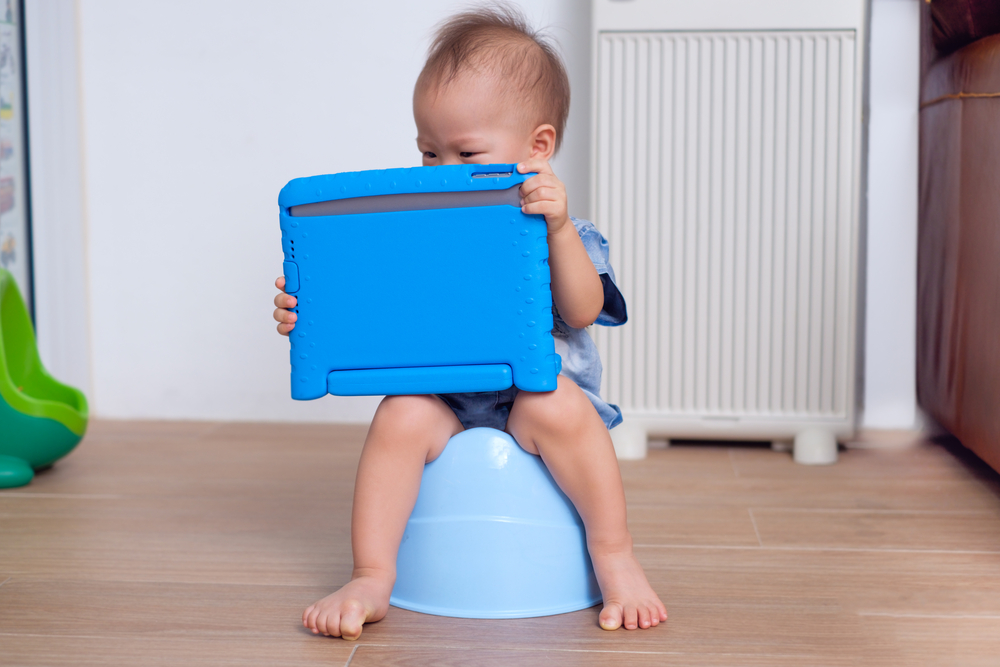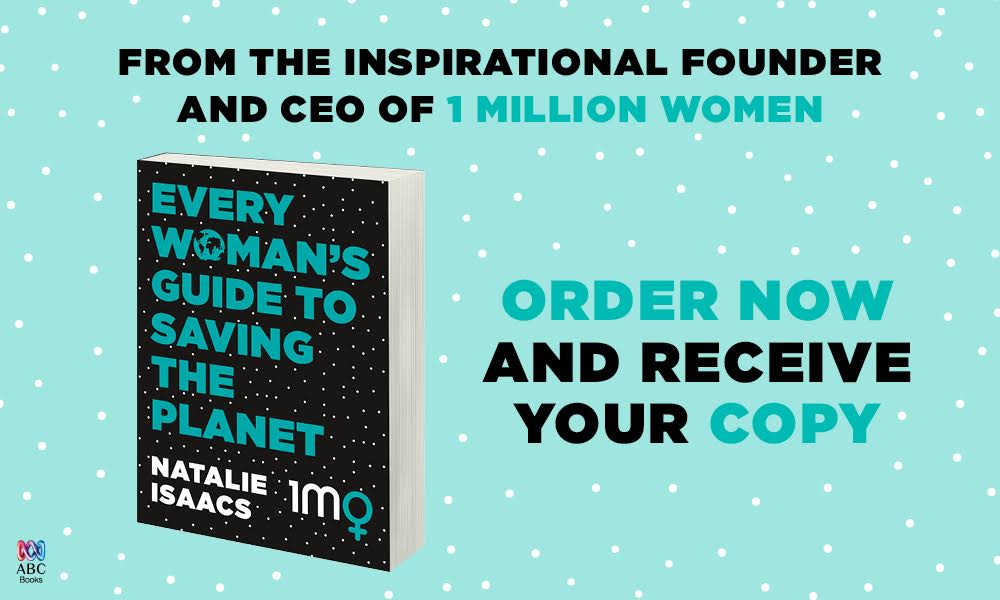This is a guest post by 1 Million Women community member Alex Lamb.
One Million Women has written a lot about cloth nappies. And what's not to love? Using cloth nappies means you're not adding to the 800 million-high pile of disposable nappies Australians add to landfills every year. Made out of petrol, they sit for about 500 years, emitting methane, a green house gas 20 times more potent than carbon dioxide.
So what's not to love about cloth nappies?
Poo. Poo from a baby on solid foods is not to love.
Cloth nappies also leave their footprint on the environment: when you wash synthetic fabrics they shed plastic microfibres into the waterways – a crippling problem for our fresh water and marine ecosystems. Washing nappies also increases our water and energy use.
But what if I told you that you can have your cloth or disposable nappies, use them less frequently, and flush those poo problems right down the loo?
And what if I told you that your baby could be fully potty trained by about 18 months?
Then let me tell you about a (rather unfortunately-termed) approach to potty training called Elimination Communication or 'nappy-free'.
What's Elimination Communication?
Elimination Communication is a way to potty train your baby from birth, though you can start at any time. What you're effectively doing is training your baby where while training yourself when.
While some in my mummy Facebook group expressed horror, shock or interest in this radical newfangled idea; when mentioning it to my colleagues who work in our international aid program, they've expressed a more casual 'oh yeah I've seen'. Because when you don't use disposable nappies, the stakes are considerably higher. The fewer nappies you have to wash, the better. That's why, across the world and across the ages when disposable nappies haven't been around, mothers have used some variation of this nappy-free technique.
Want to hear more from us? Join the movement and receive the 1 Million Women monthly newsletter!
How do you do it?
Hold your baby over a potty or on your lap facing away from you, with their bums positioned over a bucket or toilet (I use a small flat bucket). You then choose an appropriate sound to cue the pee pee or poo poo, such as 'pss pss pss' (peeing sound) or a bww bww (pooing sound). This video shows you how (along with many more on YouTube).
Simple?
Almost. All babies are different and different things will work for different people. It does require some patience and determination.

Here are some tips:
- You don't need to do it all the time! Experts recommend you don't do it all the time as your sanity is of utmost importance. Even once a day is enough to help form that association and teach your baby to use the potty earlier.
- Babies tend to pee and poo after waking up and after breastfeeding. This is the best time to put them on the potty and cue the sound.
- As babies get older, they tend to poo less and tend to poo at roughly the same time every day. This is also the time to try to catch that poo!
- Give your baby a cuddle as you hold them over the potty or on your lap – they should have a good time. If they cry or whinge, stop what you're doing, you don't want them to associate this with a bad experience.
- Sing a song. Babies love songs.
- Listen carefully and be aware. Some of the experts of EC talk of it as a special time for bonding and connecting with your baby. For, me, I have valued practicing my powers of observation to learn to pick up my baby's cues. Some cues involve: whingeing, arching the back, and farting. More subtle cues you can pick up when holding them include: holding breath, tensing muscles and softly grunting.
- Let your baby roll around nappy-free on a mat or a quilt, perhaps with an old towel on top. This saves washing nappies and is the best remedy against nappy rash. If you see your baby wee – cue the sound. Even if you don't 'catch' it in the potty, you're still helping form that association.
- Whip off that wet (cloth) nappy as soon as you notice it's wet. This keeps your baby comfortable and prevents nappy rash, but it's also important for your baby to think of dry nappies as the normal. (disposable nappies tend to suck moisture away, which is why some say it's easier to train babies who wear cloth nappies)
- It's tricky to whip off your baby's clothes in time to suspend them over the potty. Baby clothes these days are designed for disposables – they don't fit around bulkier cloth nappies, and the clothes are often laborious to put on and take off. Leg warmers, long socks and sleeping bags are good for keeping your babies warm and their nappies accessible.
A friend of mine recently asked whether I had 'mastered' this art. It's not something you can master, I have found. It's more a succession of small wins. It means instead of having to scrape poo into the loo every day, you do so once every now and then; instead of packing away those nappies for good, you just use fewer. And that indeed is rewarding.
Alex Lamb is taking a year off from working in Australia's international aid program to look after her baby while volunteering her efforts to secure a cleaner planet and safer climate for all.
Read this next: Roadtest: The Pros And Cons Of Cloth Nappies
[Images: Shutterstock]
1 Million Women Founder and CEO Natalie Isaacs has written a book! It's part memoir, part toolkit on how you can change the way you live to fight the climate crisis. You can pre-order it now from this link if you're in Australia, or this link if you're outside Australia.

